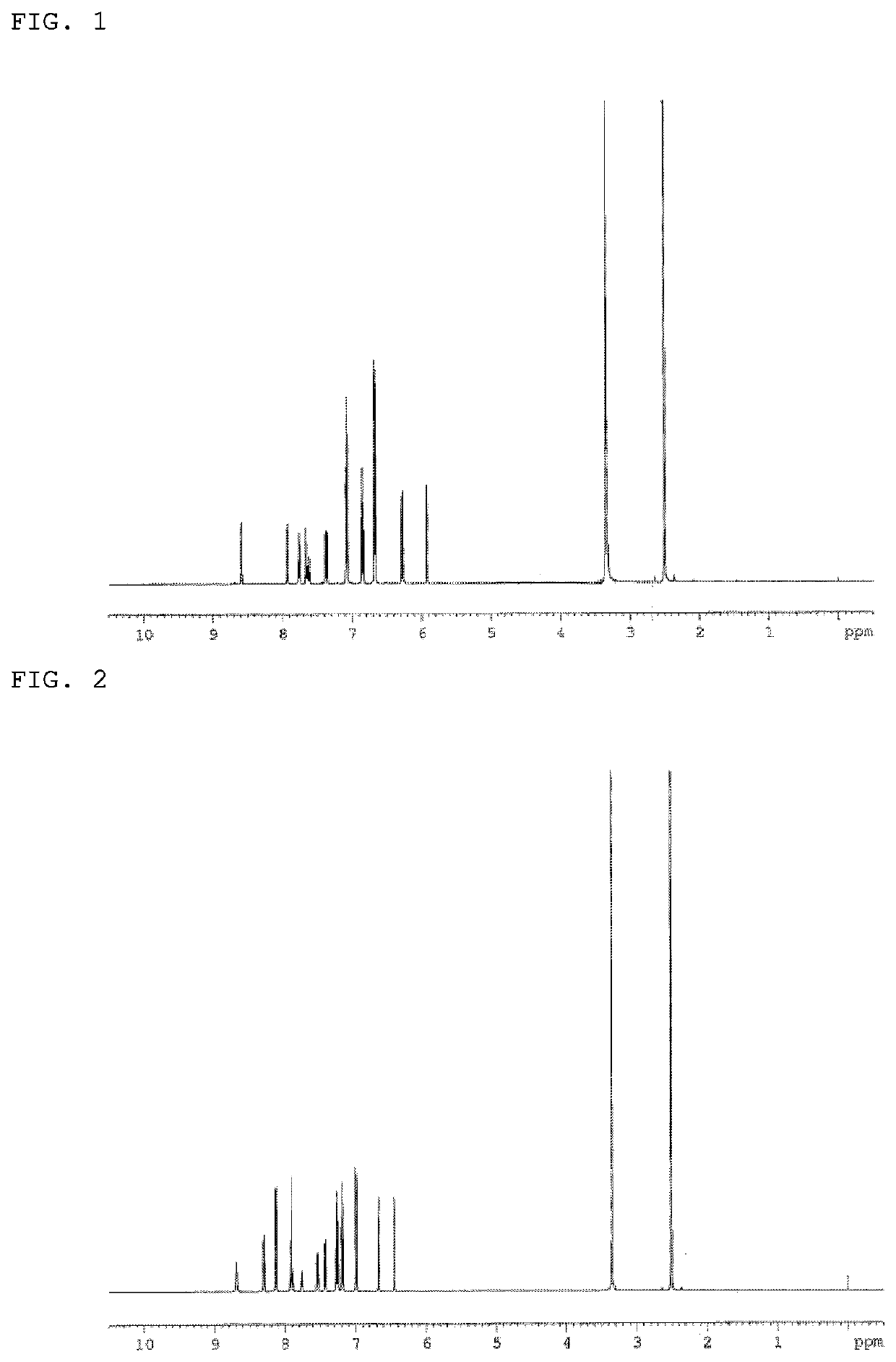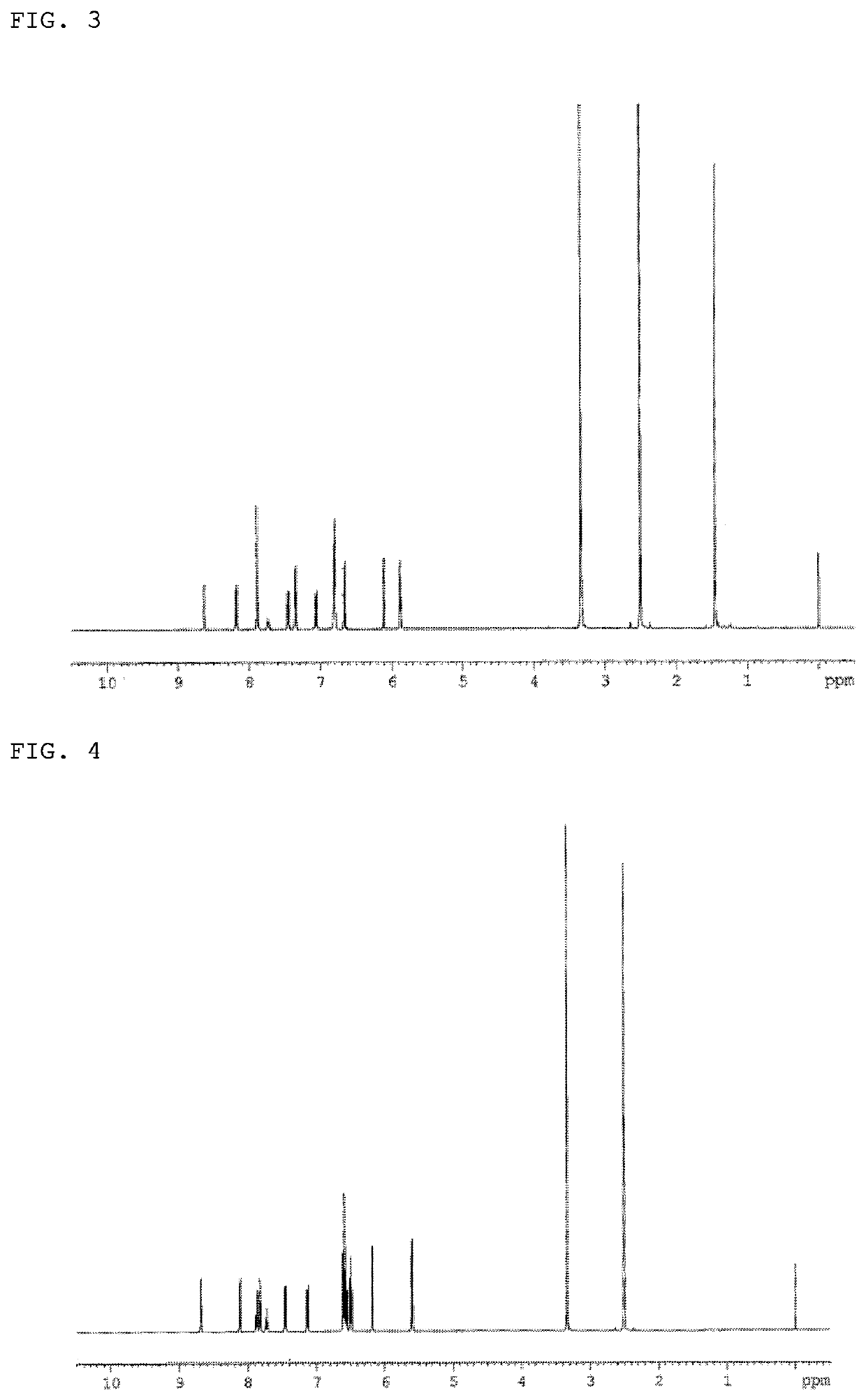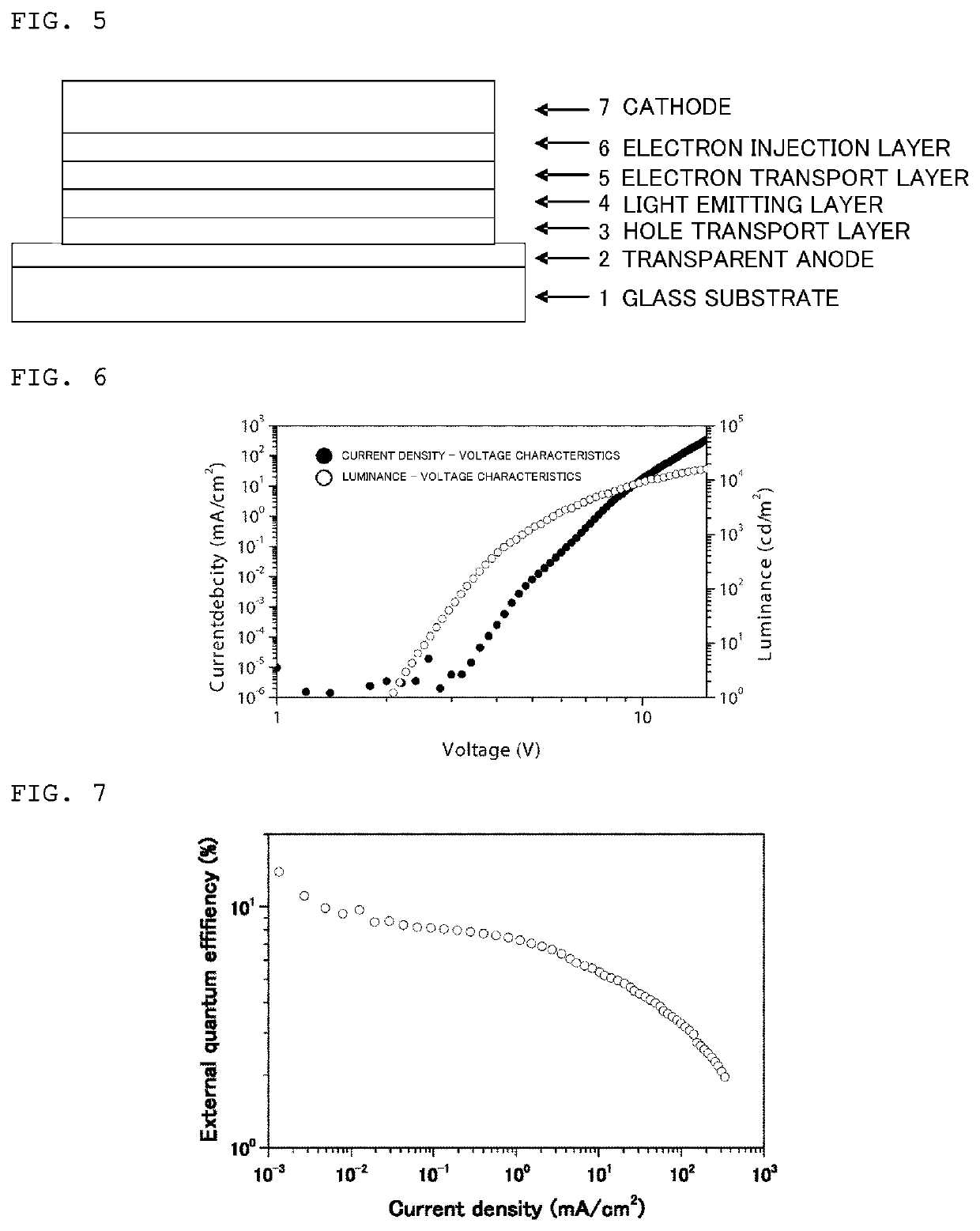Spiro compound having azafluorene ring structure, light-emitting material, and organic electroluminescent device
a technology of azafluorene and azafluorene, which is applied in the direction of organic chemistry, luminescent compositions, group 5/15 element organic compounds, etc., can solve the problems of not being able to do comprehensive studies and obtain high quantum yields in general, and achieve stable thin-film state, excellent heat resistance, and delayed fluorescence
- Summary
- Abstract
- Description
- Claims
- Application Information
AI Technical Summary
Benefits of technology
Problems solved by technology
Method used
Image
Examples
example 1
Synthesis of 2,7-bis(Diphenylamino)-10-phenyl-10H-spiro{acridine-9,9′-(4,5-diazafluorene)} (Compound 1)
[0144]A THF solution of a 1.3 M isopropylmagnesium chloride-lithium chloride complex was added into a nitrogen-substituted reaction vessel, and cooled to −20° C. A solution containing 8.2 g of 2-iodotriphenylamine in 12 ml of THF was then dropped at −20° C., and the mixture was stirred for 30 min. Thereafter, a solution of 4,5-diazafluorenone in 70 ml of THF was dropped at −20° C., and the mixture was stirred for 2 h after raising the temperature to room temperature. After adding 100 ml of a 20% (w / v) ammonium chloride aqueous solution, the mixture was concentrated under reduced pressure, and the precipitated crude product was collected by filtration. The precipitate was then washed by being heated to reflux with methanol to obtain a white powder of 9-{2-(diphenylamino)phenyl-4,5-diazafluoren-9-ol (7.8 g; yield 83%).
[0145]7.8 g of the 9-{2-(diphenylamino)phenyl-4,5-diazafluoren-9-o...
example 2
Synthesis of 2,7-bis(9H-Carbazol-9-yl)-10-phenyl-10H-spiro{acridine-9,9′-(4,5-diazafluorene)} (Compound 2)
[0150]1.2 g of the 2,7-dibromo-10-phenyl-10H-spiro{acridine-9,9′-(4,5-diazafluorene)} synthesized in Example 1, 1.4 g of carbazole, 2.0 g of tripotassium phosphate, 0.4 g of copper(I) iodide, 0.1 g of 2-(dicyclohexylphosphino)biphenyl, and 24 ml of o-xylene were added into a nitrogen-substituted reaction vessel, and heated to reflux for 48 h. After adding 100 ml of toluene, the mixture was heated, and stirred at 100° C. The filtrate was collected by thermal filtration, and concentrated under reduced pressure to obtain a crude product. The crude product was purified by column chromatography (support: silica gel, eluent: toluene / ethyl acetate), and through crystallization with a mixed solvent of toluene and methanol to obtain a pale yellow powder of 2,7-bis(9H-carbazol-9-yl)-10-phenyl-10H-spiro{acridine-9,9′-(4,5-diazafluorene)} (Compound 2; 0.8 g; yield 50%).
[0151]The structure o...
example 3
Synthesis of 2,7-bis{9,9-Dimethylacrydan-10-yl}-10-phenyl-10H-spiro{acridine-9,9′-(4,5-diazafluorene)} (Compound 3)
[0153]1.2 g of the 2,7-dibromo-10-phenyl-10H-spiro{acridine-9,9′-(4,5-diazafluorene)} synthesized in Example 1, 1.8 g of 9,9-dimethylacrydan, 1.3 g of potassium carbonate, 0.4 g of copper(I) iodide, 0.1 g of 2-(dicyclohexylphosphino)biphenyl, and 24 ml of o-xylene were added into a nitrogen-substituted reaction vessel, and heated to reflux for 48 h. After adding 100 ml of toluene, the mixture was heated, and stirred at 100° C. The filtrate was collected by thermal filtration, and concentrated under reduced pressure to obtain a crude product. The crude product was purified by column chromatography (support: silica gel, eluent: toluene / ethyl acetate), and through crystallization with a mixed solvent of toluene and methanol to obtain a pale yellow powder of 2,7-bis{9,9-dimethylacrydan-10-yl}-10-phenyl-10H-spiro{acridine-9,9′-(4,5-diazafluorene)} (Compound 3; 0.5 g; yield 2...
PUM
| Property | Measurement | Unit |
|---|---|---|
| external quantum efficiency | aaaaa | aaaaa |
| external quantum efficiency | aaaaa | aaaaa |
| temperature | aaaaa | aaaaa |
Abstract
Description
Claims
Application Information
 Login to View More
Login to View More - R&D
- Intellectual Property
- Life Sciences
- Materials
- Tech Scout
- Unparalleled Data Quality
- Higher Quality Content
- 60% Fewer Hallucinations
Browse by: Latest US Patents, China's latest patents, Technical Efficacy Thesaurus, Application Domain, Technology Topic, Popular Technical Reports.
© 2025 PatSnap. All rights reserved.Legal|Privacy policy|Modern Slavery Act Transparency Statement|Sitemap|About US| Contact US: help@patsnap.com



